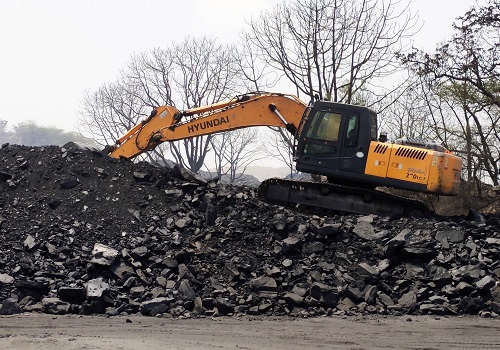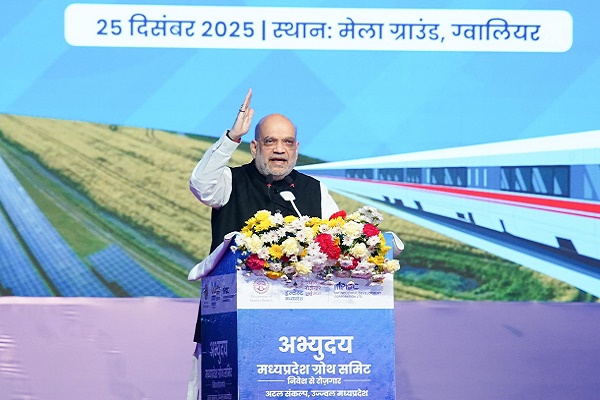India Set to Hit 1.15B Tonnes Coal Production in FY26 By CareEdge Ratings

Synopsis
* India’s coal production crossed 1,000 MT in March 2025, growing at a 10% CAGR over past five years, driven by policy reforms like Single Window Clearance, Mine Developer and Operator (MDO) model, 100% FDI allowance, traction in mine auctions, and amendments to Mines & Mineral Development Regulation Act.
* Coal consumption increased with growing demand from the power sector, which accounted for 82% of the 1,270 MT coal dispatches in FY25. Domestic coal’s share in total consumption increased from 77.7% to 82.5%, supported by 184 coal mines allocated till January 2025.
* Coal prices have been declining steadily, driven by improved supply conditions and supportive government policies. This downward trend is expected to continue in FY26.
* India is firmly progressing towards self-sufficiency, with domestic coal production set to hit the 1.15B Tonnes landmark in FY26 and meet 83% of total domestic demand, supported by structural policy reforms, accelerated mine auctions, and an expected surge in coal-fired power demand to meet rising electricity demand.
Domestic Output tops 1,000 MT; Growth to continue
India’s domestic coal production reached a record high of 1,047.6 million tonnes (MT) in FY25, marking substantial growth from 716.1 MT in FY21, at compound annual growth rate (CAGR) of approximately 10% over the past 5 years. Coal India Limited (CIL) accounted for 74% of the total production in FY25. Furthermore, all major producers have experienced notable growth, underscoring India's ongoing efforts to strengthen domestic coal supply and reduce import dependency.
India’s coal production has risen sharply since the COVID-19 pandemic, increasing by over 330 million tonnes over the past five-year period ending FY25. This reflects a structural shift towards domestic self-reliance and reduced import dependence. Initial recovery gained momentum through key policy reforms, including the expansion of commercial coal mining, faster clearances, and improved evacuation infrastructure. Greater private sector participation, higher captive mine output, and steady production by Coal India Limited (CIL) and Singareni Collieries Company Limited (SCCL) have supported this growth. Fiscal year 2023 saw a sharp increase in coal production, primarily due to the low base effect resulting from the significant recovery in coal output following the COVID-19 pandemic. Thereafter, the growth rate has moderated due to a high base; however, the long-term trend underlines India’s push for energy security and supply resilience.
The following series of policy reforms has helped address regulatory hurdles, such as delays in environmental and land clearances, as well as delays in the commercialisation of new mines. Furthermore, logistical challenges in coal transportation and evacuation from remote mining regions affected supply chain efficiency.
Table 1: Policy Reforms Driving Domestic Coal Production Momentum
As of January 2025, the Ministry of Coal has allocated a total of 184 mines, with Mine Opening Permissions granted for 65 blocks. These operational blocks have collectively produced 136.59 million tonnes (MT) of coal, representing a 34.20% increase over the previous year. The 12th round, launched in March 2025, offered 28 additional blocks for auction. Production at captive and newly auctioned mines continues to rise, supported by improved logistics and supply chains. The viability of coal mines has improved, thanks to rising demand and advancements in technology, thereby contributing to India’s target of 1.5 billion tonnes of coal demand by 2030.
Domestic Coal Consumption
The chart shows the rising trend in India’s coal consumption alongside the increasing share of domestic supply from FY21 to FY25. Furthermore, the share of domestic coal supply in meeting total demand has improved from 77.7% in FY21 to 82.5% in FY25.
Chart 2: Coal Consumption (MT)
India’s total coal consumption has increased steadily from 922.2 million tonnes (MT) in FY21 to 1270.0 MT in FY25, reflecting a CAGR of approximately 8.3%. This growth is driven by rising electricity demand across industrial, commercial, and rural sectors, as well as delays in the adoption of renewable energy in certain regions. The power sector continued to be the largest consumer of domestic coal, accounting for 82% of the total dispatches of 1,270 MT in FY25.
Chart 3: Coal Dispatch to Different Sectors in FY25
Coal prices are expected to decline in FY26, primarily due to a decrease in global consumption, which is anticipated to be mainly driven by China. China’s electricity sector plays a crucial role in global coal markets, with one-third of the world’s coal consumption occurring at Chinese power plants. In FY24, China continued diversifying its power sector by expanding nuclear energy and accelerating the growth of solar PV and wind capacity, which is expected to limit the uptick in coal consumption.
Chart 4: International Coal Prices (USD/tonne)
Balancing Demand and Sustainability
Coal remains the dominant fuel in India’s energy mix, with the power sector accounting for 82% of total coal consumption, followed by 6% in captive power generation. As energy demand continues to rise, coal usage is expected to increase, especially for electricity generation in regions where renewable alternatives are still underdeveloped.
At the same time, environmental concerns and climate commitments are reshaping long-term policy. The government has taken several steps to improve sustainability, including promoting bio-reclamation of mined areas, mandating the use of washed coal to reduce emissions, rationalising logistics through flexible linkage policies, and piloting carbon capture technologies. Under Mission Coking Coal, efforts are underway to reduce import dependence and enhance extraction efficiency. The steady growth in domestic coal supply reflects the need to strike a balance between energy security and environmental responsibility.
Conclusion
India’s coal demand continues to rise, reflecting the enduring significance of coal even as the country advances toward sustainable energy alternatives. With domestic production initiatives such as coal mine auctions and improved mining efficiencies, India has been increasing its reliance on domestic coal production, thereby reducing import dependency. This aligns with the government’s Atmanirbhar Bharat mission, supporting the economy's postpandemic recovery and growth.
“India’s coal sector continues to exhibit strong growth momentum backed by structural policy reforms, accelerated mine auctions, and the expected surge in coal-fired power demand to meet rising electricity demand. With domestic coal production expected to hit 1.15 billion tonnes and meet 83% of the domestic demand in FY26, India is firmly progressing toward coal self-sufficiency,” said Nitu Singh, Associate Director, CareEdge Advisory & Research.
Above views are of the author and not of the website kindly read disclaimer




.jpg)



















